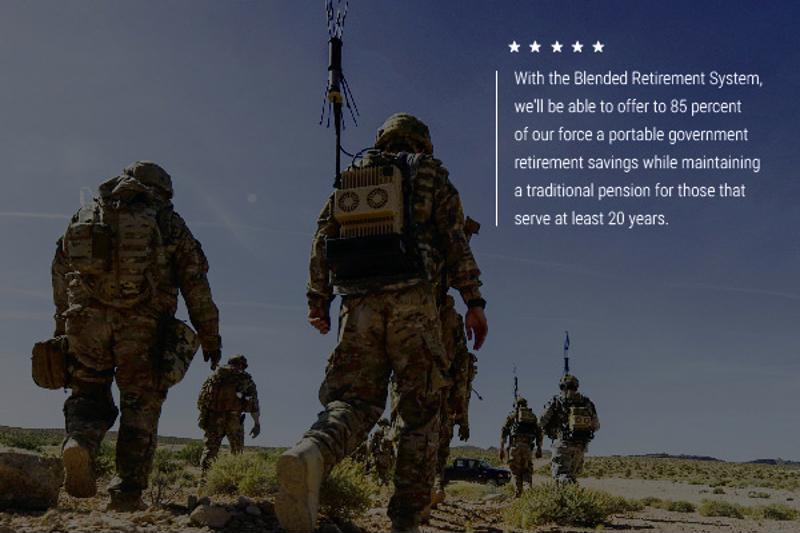The U.S. Department of Defense recently introduced the new and improved Blended Military Retirement Plan. There are some significant changes to the system and calculating the difference between the old and new military retirements plan might be a difficult endeavor for current service members.
Let's shed some light on the new BRP: What is it, who's impacted by it, and how do you navigate the new system.
How big is the change?
The upgrade isn't a minor tweak of the military's current retirement system, rather it's a sweeping disruption. Anthony Kurta, who is performing the duties of undersecretary of defense for personnel and readiness, spoke with Pentagon reporters about this key step in modernizing the military's retirement system to more closely align with similar private-sector plans.
"[The new military retirement system is] one of the most significant changes to military pay and benefits that we've ever had over the past 70 years," explained Kurta. "We'll now be able to offer to 85 percent of our force a portable government retirement savings while still maintaining a traditional pension for those that serve at least 20 years."

What is the Blended Military Retirement Plan?
Now that we know it's a pretty big deal, let's dive into what the changes mean. The 2017 National Defense Authorization Act (NDAA) originally introduced the change that will affect all new entrants to the military as of Jan. 1, 2018. The change, known as the Blended Retirement System, is a dramatic departure from the military's current retirement plan. As it stands, immediately upon retirement, the military awards 50 percent of base pay as a pension for qualifying services, according to Military Times.
"The new system merges a defined benefit plan with a defined contribution plan."
However, the new Blended Retirement System merges the defined benefit plan with a defined contribution plan, which is similar to a 401(k). Dubbed the Thrift Savings Plan, this feature will add up to a 5 percent match on all personal contributions to the plan.
Who's impacted by the change?
Anyone who joined the military before 2006 is automatically grandfathered into the old system. Meanwhile, anyone who joins in 2018 or beyond will be covered by the new system. However, active duty service members with between one and 12 years must decide between either the old system or the new system. This is no easy decision, yet about 1.15 million service members, or roughly 88 percent of all active duty military, fall into this third category.
How to navigate the new system
Thankfully, active duty service members don't have to make their decision immediately – they'll have one year to make a choice on which plan they'll want to use. This provides ample time to speak with support groups, such as family and friends, consult with an accountant or other wealth management advisors and make an informed decision about the best path forward.
To assist in the decision-making process, the military rolled out a Blended Retirement Service Comparison Calculator designed to assist eligible service members in their efforts to compare and contrast the new and old systems.
It will be crucial for those active duty military members who will be impacted by this change to review the Blended Retirement System to ensure they fully understand the changes and they make the most informed decision on the fate of their retirement.

